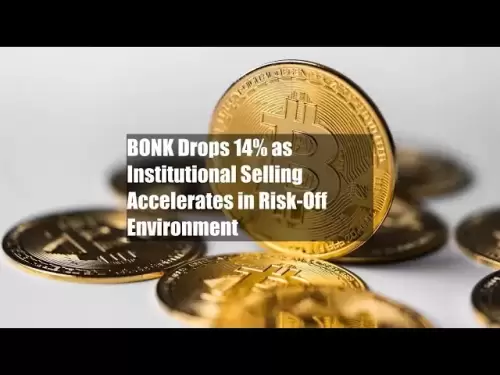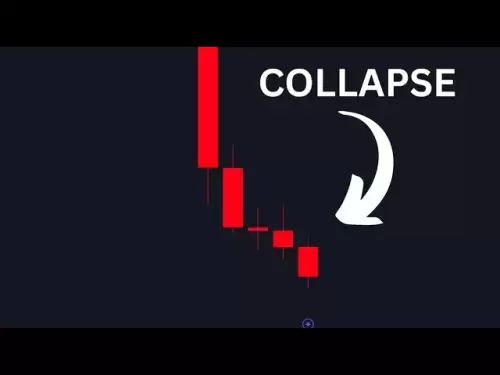-
 Bitcoin
Bitcoin $112400
-1.07% -
 Ethereum
Ethereum $3409
-3.27% -
 XRP
XRP $2.784
-6.60% -
 Tether USDt
Tether USDt $0.9997
-0.03% -
 BNB
BNB $739.3
-2.09% -
 Solana
Solana $158.0
-2.90% -
 USDC
USDC $0.9998
-0.02% -
 TRON
TRON $0.3213
-0.94% -
 Dogecoin
Dogecoin $0.1929
-5.01% -
 Cardano
Cardano $0.6974
-2.82% -
 Hyperliquid
Hyperliquid $36.69
-2.31% -
 Sui
Sui $3.327
-4.80% -
 Stellar
Stellar $0.3672
-5.18% -
 Chainlink
Chainlink $15.65
-3.07% -
 Bitcoin Cash
Bitcoin Cash $525.0
-1.68% -
 Hedera
Hedera $0.2291
-6.00% -
 Avalanche
Avalanche $20.91
-2.96% -
 Ethena USDe
Ethena USDe $1.000
0.00% -
 Toncoin
Toncoin $3.520
-1.12% -
 UNUS SED LEO
UNUS SED LEO $8.968
0.14% -
 Litecoin
Litecoin $105.7
0.26% -
 Shiba Inu
Shiba Inu $0.00001181
-1.79% -
 Polkadot
Polkadot $3.492
-2.08% -
 Uniswap
Uniswap $8.800
-3.10% -
 Dai
Dai $0.9999
-0.01% -
 Monero
Monero $289.9
-3.17% -
 Bitget Token
Bitget Token $4.243
-1.27% -
 Pepe
Pepe $0.00001006
-3.67% -
 Cronos
Cronos $0.1248
-5.68% -
 Aave
Aave $249.7
-2.50%
How fast is the market reaction time for Bitcoin ETF?
Market reaction to Bitcoin ETF news varies, influenced by announcement nature, market sentiment, and regulatory landscape, with algorithmic trading amplifying speed.
Mar 27, 2025 at 11:35 am
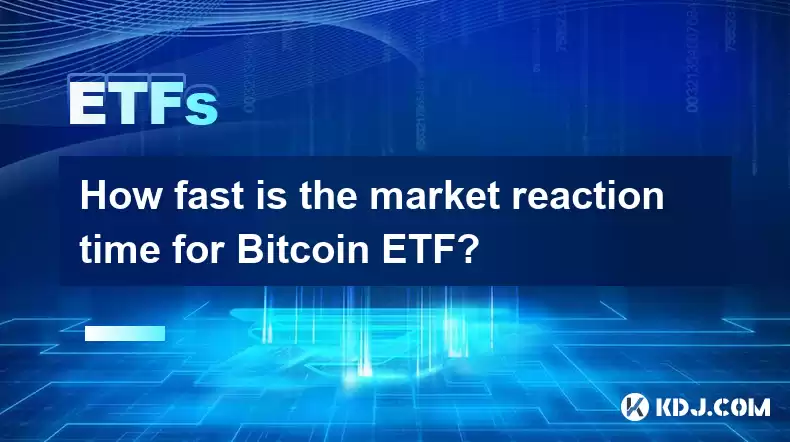
Understanding Market Reaction Time to Bitcoin ETF News
The speed of market reaction to Bitcoin ETF news is a complex issue, influenced by various factors. It's not a simple, quantifiable number. Instead, it's a dynamic process influenced by the nature of the announcement, the overall market sentiment, and the existing regulatory landscape. A positive announcement, such as approval, will likely see a much faster and more pronounced reaction than a negative one, like a rejection. The pre-existing anticipation also plays a crucial role. Months of speculation can lead to a less volatile, albeit still significant, response compared to a completely unexpected announcement.
Factors Influencing Reaction Time
Several factors significantly influence how quickly the market responds to Bitcoin ETF news. Pre-existing market sentiment is crucial. A bullish market might see a more enthusiastic response than a bearish one. The specificity of the news also matters. A clear approval with specific details will trigger a faster reaction than a vague statement or rumor. The timing of the announcement is another factor. News released during peak trading hours will have a more immediate impact than news released outside of market hours. Finally, the credibility of the source impacts the market's response. News from a reputable source will generally be met with a faster and more significant reaction than news from less credible sources.
Immediate Reactions vs. Long-Term Effects
The immediate reaction to Bitcoin ETF news often involves significant price volatility. This can manifest as rapid price increases or decreases depending on the nature of the news. However, the long-term effects are often more subtle and depend on various other market forces. The initial spike or dip might be followed by a period of consolidation or further price movement based on subsequent news and market analysis. Understanding this distinction between short-term volatility and long-term trends is vital for investors.
Dissemination of Information and its Impact
The speed at which information spreads also plays a critical role. In today's digital age, news travels rapidly through social media, news outlets, and dedicated cryptocurrency trading platforms. This rapid dissemination can lead to almost instantaneous market reactions. However, the accuracy and reliability of the information disseminated are also crucial. Misinformation or rumors can trigger temporary, volatile reactions that may not reflect the long-term implications of the actual ETF news.
Steps Involved in a Market Reaction
The market's response to Bitcoin ETF news isn't a single event; it unfolds in stages.
- Initial Shock: The immediate reaction, often a sharp price movement based on the initial interpretation of the news.
- Information Processing: Traders and investors analyze the news in detail, considering its implications.
- Market Adjustment: Prices stabilize, reflecting the collective assessment of the news's impact.
- Long-Term Trend Formation: The market incorporates the ETF news into its long-term price trends.
This process is not always linear and can be influenced by other concurrent events in the cryptocurrency market and the broader financial landscape.
Analyzing Past Reactions to ETF-Related News
Examining past market reactions to significant Bitcoin ETF-related news provides valuable insight. While past performance doesn't guarantee future results, analyzing these events can help gauge potential reaction times. This involves studying price charts, trading volumes, and market sentiment surrounding past announcements. This analysis can reveal patterns and help investors better anticipate future reactions. However, it's crucial to remember that each situation is unique, and the context of each announcement must be carefully considered.
The Role of Algorithmic Trading
High-frequency algorithmic trading plays a significant role in shaping the speed of market reactions. These automated trading systems can react to news instantaneously, often leading to rapid price movements. They analyze news feeds, social media sentiment, and other data points to execute trades at incredible speeds, amplifying both positive and negative reactions. Understanding the impact of algorithmic trading is crucial for comprehending the dynamics of rapid market responses.
The Influence of Regulatory Uncertainty
Regulatory uncertainty significantly impacts reaction times. If the regulatory landscape is unclear, the market's response to ETF news might be more cautious and less pronounced. Conversely, a clear and supportive regulatory framework can lead to a more decisive and rapid market reaction. The ongoing regulatory debates surrounding Bitcoin ETFs highlight this uncertainty and its impact on market behavior. Investors should carefully consider the regulatory environment when assessing potential market reactions.
The Impact of Institutional Investors
The involvement of institutional investors significantly influences the market's reaction to Bitcoin ETF news. Large-scale institutional investments can trigger substantial price movements, accelerating the market's response. The entry of institutional investors often signals increased confidence and legitimacy in the cryptocurrency market, potentially leading to a more significant and sustained price appreciation. Their actions often act as a catalyst for broader market participation.
The Psychological Aspect of Market Reactions
The psychological aspect of market reactions cannot be overlooked. Fear, greed, and speculation all play significant roles in shaping investor behavior and, consequently, market responses. Sudden news can trigger emotional responses, leading to impulsive trading decisions that can amplify price volatility. Understanding the psychological factors influencing market reactions is essential for navigating the complexities of the cryptocurrency market.
Frequently Asked Questions
Q: How long does it typically take for the market to react to Bitcoin ETF approval news?
A: There's no single answer. The reaction time varies depending on the factors discussed above, including pre-existing market sentiment, the specificity of the announcement, and the timing of the release. It could range from minutes to days.
Q: Will the market always react positively to Bitcoin ETF approval?
A: Not necessarily. While approval is generally positive, the market's reaction depends on the overall market sentiment and other concurrent events. A bearish market might still see a muted response, even with approval.
Q: How can I protect myself from extreme volatility during a Bitcoin ETF market reaction?
A: Diversification is key. Don't put all your eggs in one basket. Also, consider your risk tolerance and avoid impulsive trading decisions based on short-term price fluctuations. Thorough research and a well-defined investment strategy are crucial.
Q: What role does social media play in shaping market reactions to Bitcoin ETF news?
A: Social media significantly impacts market reactions. Rapid dissemination of information, both accurate and inaccurate, can lead to amplified volatility. It's crucial to be discerning about information sources and avoid relying solely on social media for investment decisions.
Q: Are algorithmic trading bots responsible for the speed of market reactions?
A: Algorithmic trading significantly contributes to the speed of market reactions. These automated systems can react to news almost instantaneously, often amplifying both positive and negative price movements. Their presence makes the market more susceptible to rapid fluctuations.
Disclaimer:info@kdj.com
The information provided is not trading advice. kdj.com does not assume any responsibility for any investments made based on the information provided in this article. Cryptocurrencies are highly volatile and it is highly recommended that you invest with caution after thorough research!
If you believe that the content used on this website infringes your copyright, please contact us immediately (info@kdj.com) and we will delete it promptly.
- Ruvi AI: The AI Token on Cardano Set to Dominate After CMC Listing
- 2025-08-03 04:50:12
- Altcoins in the Spotlight: Cardano, Shiba Inu, and the Quest for Crypto Supremacy
- 2025-08-03 05:30:12
- Litecoin, USDC, and Mining in 2025: A New Yorker's Take
- 2025-08-03 05:50:12
- Bitcoin, MicroStrategy, and Institutional Confidence: A Bullish Trifecta?
- 2025-08-03 04:30:12
- Ruvi AI Token: Price Hike Imminent After Presale Milestone?
- 2025-08-03 04:30:12
- Ruvi AI: The Millionaire Maker with a Price Spike on the Horizon?
- 2025-08-03 02:50:12
Related knowledge
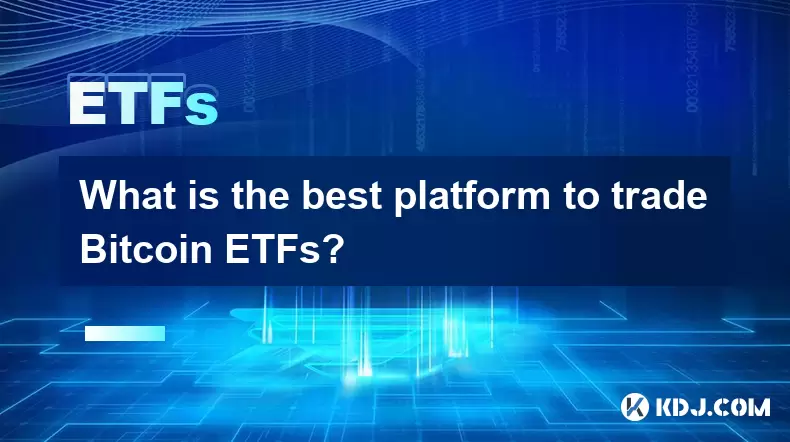
What is the best platform to trade Bitcoin ETFs?
Jul 23,2025 at 04:14am
Understanding Bitcoin ETFs and Their Role in TradingBitcoin Exchange-Traded Funds (ETFs) have gained significant traction among traditional and crypto...
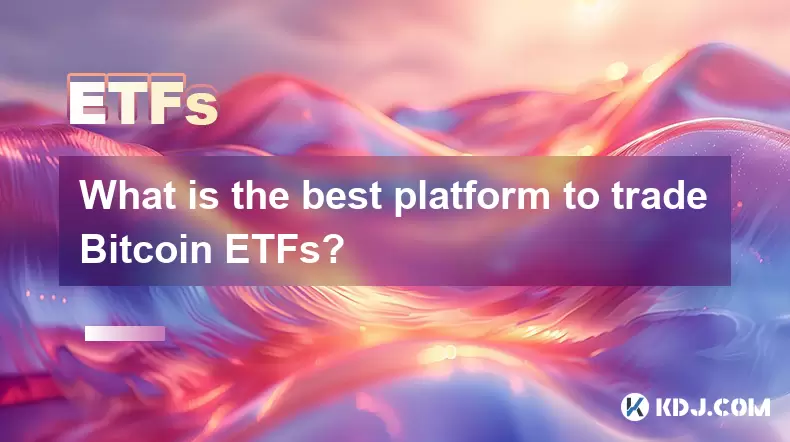
What is the best platform to trade Bitcoin ETFs?
Jul 17,2025 at 03:50pm
Understanding Bitcoin ETFs and Their Role in the MarketBitcoin Exchange-Traded Funds (ETFs) are investment vehicles that track the price of Bitcoin wi...

Will a Bitcoin ETF be available in my 401(k)?
Jul 17,2025 at 10:42pm
What is a Bitcoin ETF?A Bitcoin ETF (Exchange-Traded Fund) is an investment vehicle that tracks the price of Bitcoin without requiring investors to di...
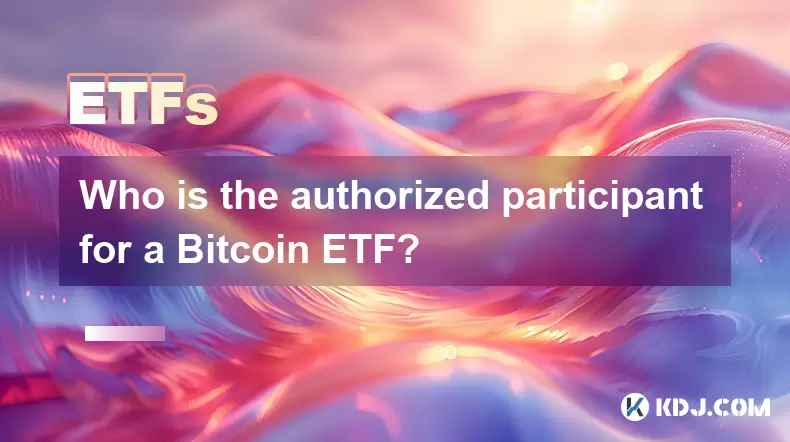
Who is the authorized participant for a Bitcoin ETF?
Jul 18,2025 at 12:42am
Understanding the Role of Authorized Participants in Bitcoin ETFsIn the context of Bitcoin Exchange-Traded Funds (ETFs), an authorized participant (AP...
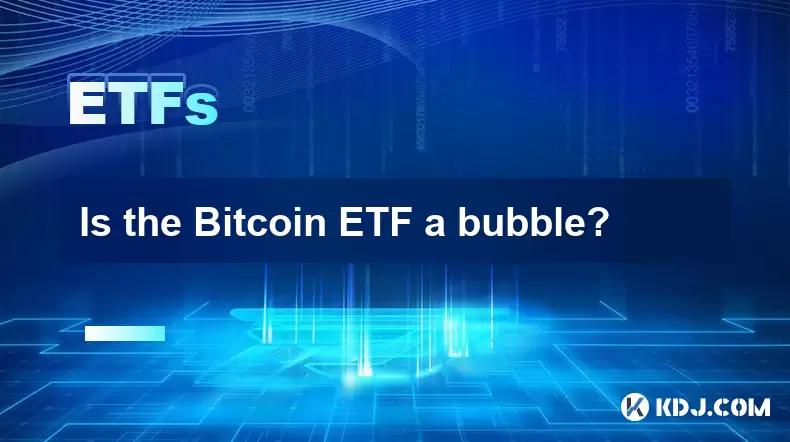
Is the Bitcoin ETF a bubble?
Jul 20,2025 at 06:57am
Understanding the Bitcoin ETF ConceptA Bitcoin Exchange-Traded Fund (ETF) is a financial product that aims to track the price of Bitcoin without requi...
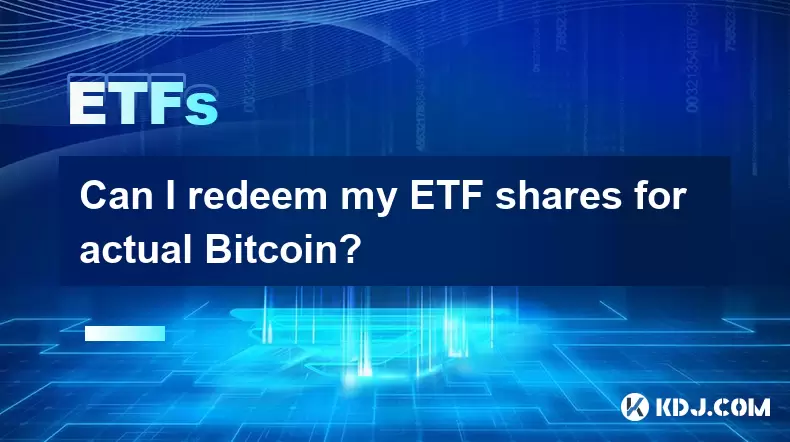
Can I redeem my ETF shares for actual Bitcoin?
Jul 17,2025 at 03:14pm
Understanding ETF Shares and Their Relation to BitcoinExchange-Traded Funds (ETFs) have become a popular investment vehicle for those looking to gain ...

What is the best platform to trade Bitcoin ETFs?
Jul 23,2025 at 04:14am
Understanding Bitcoin ETFs and Their Role in TradingBitcoin Exchange-Traded Funds (ETFs) have gained significant traction among traditional and crypto...

What is the best platform to trade Bitcoin ETFs?
Jul 17,2025 at 03:50pm
Understanding Bitcoin ETFs and Their Role in the MarketBitcoin Exchange-Traded Funds (ETFs) are investment vehicles that track the price of Bitcoin wi...

Will a Bitcoin ETF be available in my 401(k)?
Jul 17,2025 at 10:42pm
What is a Bitcoin ETF?A Bitcoin ETF (Exchange-Traded Fund) is an investment vehicle that tracks the price of Bitcoin without requiring investors to di...

Who is the authorized participant for a Bitcoin ETF?
Jul 18,2025 at 12:42am
Understanding the Role of Authorized Participants in Bitcoin ETFsIn the context of Bitcoin Exchange-Traded Funds (ETFs), an authorized participant (AP...

Is the Bitcoin ETF a bubble?
Jul 20,2025 at 06:57am
Understanding the Bitcoin ETF ConceptA Bitcoin Exchange-Traded Fund (ETF) is a financial product that aims to track the price of Bitcoin without requi...

Can I redeem my ETF shares for actual Bitcoin?
Jul 17,2025 at 03:14pm
Understanding ETF Shares and Their Relation to BitcoinExchange-Traded Funds (ETFs) have become a popular investment vehicle for those looking to gain ...
See all articles





















